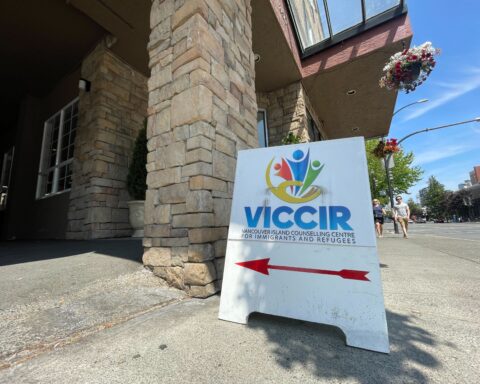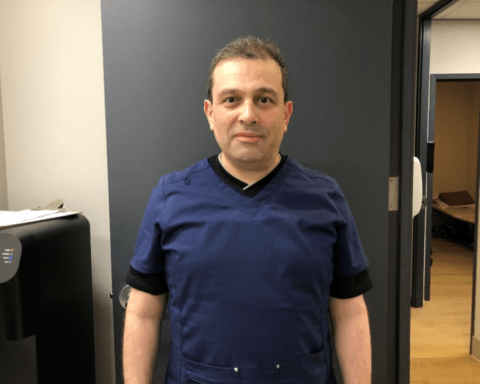A much heralded push toward digital patient portals, commonly integrated with electronic health records, may be exacerbating health disparities between rich and poor, instead of reducing them, as they were intended to.
In fact, for a variety of reasons, “you could argue they increase disparities,” said Suneel Ratan, chief strategy officer of Community Health Center Network and the Alameda Health Consortium, who has researched the use of patient portals in Bay Area community health centers.
Last year, MayView Community Health Center’s three clinics – here in Mountain View, Palo Alto and Sunnyvale — launched their patient portal tool to meet “meaningful use” requirements in order to receive federal incentive checks, a part of the Electronic Health Records Incentive Program. The program was designed to help health care providers move away from a paper-based system. A few mouse clicks allows a doctor to navigate the entire medical history of a patient.
Patient portals, which have been in use for more than a decade in larger hospitals nationwide, are commonly integrated with electronic health records. They are secure online websites that give patients 24-hour access to their personal health information from anywhere with an Internet connection. It’s a way of patients being engaged with their care team and on their own time, with the hope that it will lead to better health outcomes.
Among other functionalities, patient portals typically include online appointment scheduling, bill pay, prescription renewals and the ability to accept patient-generated data on allergies and other health issues. Patients also have access to lab results.
MayView, a federally qualified health center (FQHC), spent about $30,000 in staff time to build its portal, the clinic’s Executive Director Kelvin Quan said, noting that the tool was not only to meet the federal “meaningful use” standard by tethering it to electronic health records, but also to “meet a standard in adopting the patient care model known as ‘Patient Centered Health Home,’” a kind of one-stop shop for patient care.
Soon after MayView launched the tool, many patients enrolled, but enthusiasm seemed to wane after a few weeks, when the program became something like “white noise,” [a collection of sounds that are a mere distraction] as MayView’s Medical Director Dr. Aarti Gupta described it.
Enrollment figures in MayView’s program show that of the clinic’s approximately 6,600 patients, only 600 are currently enrolled. Of them, only 200 are active users.
Quan believes the tool’s low patient penetration is because “technology doesn’t work for our population,” a good percentage of whom are Hispanic and Asian and Pacific Islanders. That could be the reason why East Palo Alto-based Ravenswood Family Health Center, also an FQHC and with a similar patient demographic, has low usage of its patient portal – 10 to 15 percent — according to Chief Executive Director Luisa Buada.
“The majority of our patients are Spanish-speaking with lower literacy (including health literacy, reading literacy and computer literacy) rates,” said Dr. Justin Wu, Ravenswood’s Clinical Informatics Officer. “Add to that the current political climate with mistrust around immigration issues and a general hesitancy to give out information or have health information online, and I think it helps explain some of the problems we’ve been having with patients in using our patient portal.” The two clinics reflect a national usage trend that showed that Asian Americans, Latino Americans and African Americans were 23 percent, 55 percent and 62 percent less likely to register for digital personal health record access, respectively, compared to non-Hispanic whites.
First off, “many of our patients can’t afford computers. If they can, their [technology literacy level] makes it difficult for them to navigate the information,” Quan said.
For those who have the app on their cell phone, the font is so small, they can’t read it, he said.
David Lindeman, director, Center for Innovation and Technology in Public Health and the CITRIS program at UC Berkeley, believes that if some of the text were taken out of patient portals and replaced with images and videos the tool could possibly be embraced by more patients.
A study done two years ago by five academics shows why the patient portal program has been relatively successful at Kaiser Permanente, a large grouping of hospital and practices, as well as the nation’s second-largest insurer. By 2015, Kaiser had registered 70 percent of their 5.2 million patients on their portal, well above the health care industry expectation of 50 percent, according to Quan.
The bulk of Kaiser’s patient portal education material – not entirely simply written — is geared toward white, middle-class people, who are better educated. Patients with a post-graduate education are more likely to register than adults with a high school education or less on to My Health Manager.
“You have to meet the patients where they are coming from,” said Quan.
My Health Manager enrollees can email their care team members with health questions and expect a response within 48 hours.
Most of MayView’s patients are on Medi-Cal (the federal-state health insurance program for low-income people, known as Medicaid in the rest of the nation). Some are undocumented. Care providers at the clinic are already stretched thin, Gupta said, one of the reasons why MayView’s patient portal lacks the e-mail communication functionality.
“If they had to respond to queries from their patients on the computer, it would take time away from attending to patients” who prefer face time with their providers, Gupta said.
Besides, “Medi-Cal will not reimburse them” for computer time, Quan said.
Ratan said most FQHCs don’t have the resources to implement robust functionality in their patient portals. But at least one he has worked with has deployed a patient portal that includes medical records, in addition to appointment schedules and refills.
Republished in partnership with New America Media.




